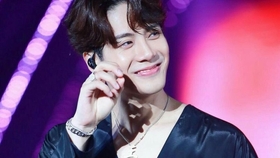摘要:本文探讨了电视剧与深圳游戏媒体之间的区别。文章指出,电视剧主要侧重于影像叙事和表演艺术,通过故事情节和角色塑造来吸引观众。而深圳游戏媒体则专注于游戏内容、产业动态和玩家体验的报道。文章进一步解析了两者在内容制作、传播方式和受众群体等方面的差异,并提出了相应的执行策略。文章强调了快速计划设计在媒体行业中的重要性。
In the realm of entertainment and information technology, the television series and game media are two distinct yet interconnected domains. While both contribute to the cultural landscape in their own ways, there exist significant differences between them, particularly when comparing the execution strategies employed by them. This article delves into the disparities between a television series and Shenzhen game media, emphasizing a reliable execution strategy.
Television Series: The Traditional yet Dynamic Art Form
Television series, as we know it, is a traditional medium of entertainment that has been around for decades. It is a highly structured form of narrative storytelling, often spanning multiple episodes or seasons. The content of television series is diverse, ranging from dramas to comedies to reality shows and more. Its execution strategy typically involves meticulous planning, production, and distribution processes that ensure a consistent flow of content to the audience.
On the other hand, Shenzhen Game Media: The New Frontier of Digital Entertainment
Shenzhen game media, on the other hand, represents the latest frontier in digital entertainment. It is a product of the modern era, thriving in the fast-paced world of technology and the internet. Game media not only encompasses traditional gaming platforms but also extends to mobile games, online gaming communities, and more. Its execution strategy is centered on delivering engaging content to a younger audience, often utilizing innovative technologies and platforms to reach out to them.
The Difference in Execution Strategy
The primary difference between the execution strategies of television series and Shenzhen game media lies in their approach to content delivery and audience engagement. Television series often follow a linear narrative structure, relying on traditional distribution channels to reach out to its audience. Its reliability lies in its consistent delivery of quality content that often builds over time through seasons or episodes.
Shenzhen game media, on the other hand, operates in a dynamic digital landscape. It adopts an agile approach to content delivery, often utilizing multiple platforms and technologies to engage with its audience. Its reliability is reflected in its ability to adapt quickly to changing trends and audience preferences. It often leverages user-generated content, social media interactions, and real-time updates to stay connected with its audience.
A Reliable Execution Strategy for Both
Despite the differences in execution strategies, both television series and Shenzhen game media can benefit from a reliable approach. For television series, maintaining a consistent quality of content and staying true to its narrative structure is crucial. It should also explore new distribution channels to reach out to a younger audience. For Shenzhen game media, staying agile and adapting to changing trends is essential. It should also prioritize delivering engaging content that resonates with its audience while maintaining a high level of reliability.
Conclusion
In conclusion, television series and Shenzhen game media are two distinct mediums with their own unique strengths and execution strategies. While television series rely on traditional distribution channels and narrative structures, Shenzhen game media thrive in the fast-paced digital landscape. However, both can benefit from a reliable execution strategy that prioritizes delivering engaging content to their respective audiences while adapting to changing trends and preferences. By understanding their differences and adopting a reliable approach, television series and Shenzhen game media can continue to grow and thrive in their respective domains.




 鲁ICP备18003477号-1
鲁ICP备18003477号-1 鲁ICP备18003477号-1
鲁ICP备18003477号-1